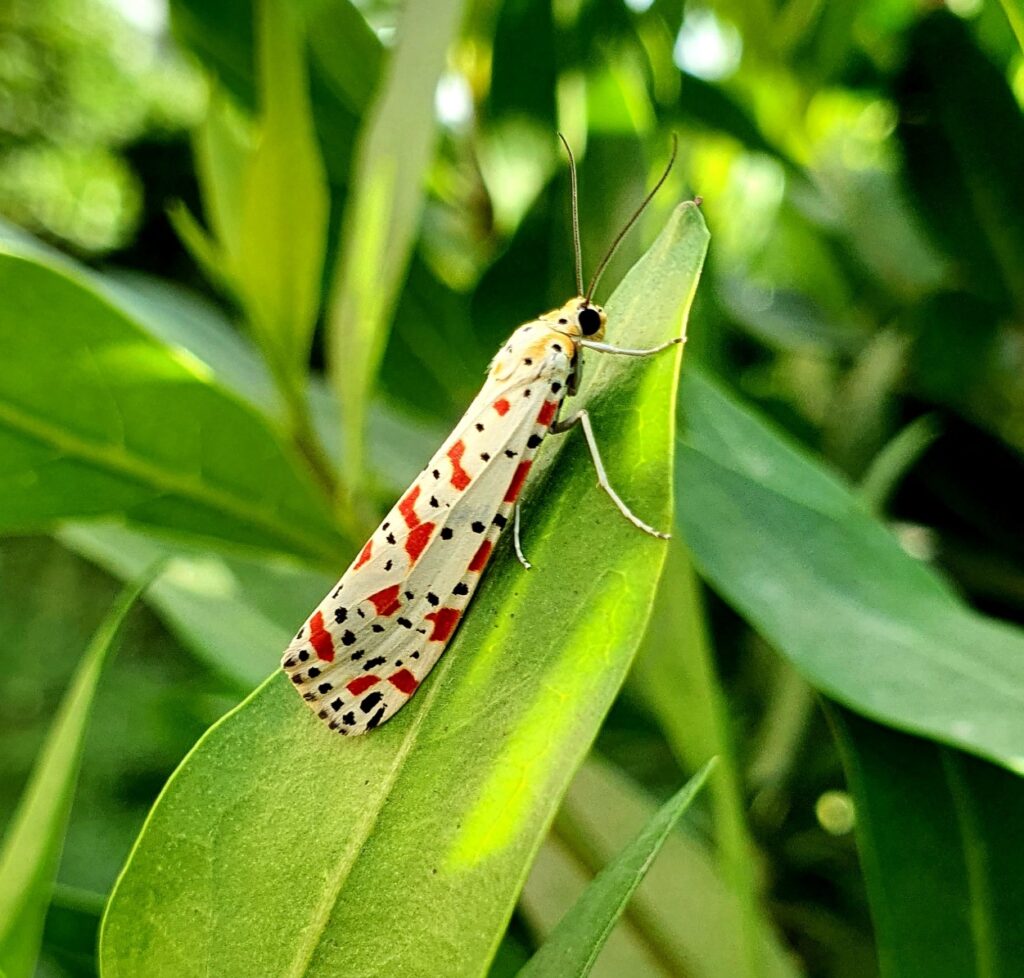
While exploring the garden, I chanced upon this exquisite moth. Being a moth enthusiast, I must admit that this is one of the most stunning moths I have ever come across.
The Utetheisa pulchella moth, also known as the crimson-speckled flunkey, is a species of moth that is native to North and South America. These beautiful insects are easily recognizable due to their bright and striking colouration, which is characterized by bright crimson spots on their wings.
Physical Characteristics
The Utetheisa pulchella moth is a relatively small species with a wingspan that measures between 1.2 to 1.6 inches (3-4 cm). The wings of the moth are usually a light cream color, with varying amounts of crimson spots on them. The crimson spots on the wings can vary in size and shape, but they are usually circular or oval in shape.
The larvae of the Utetheisa pulchella moth are equally stunning, with their black and orange stripes that run the length of their bodies. The larvae feed on a variety of plants, including poisonous ones, such as the Crotalaria, which contain toxic alkaloids that the larvae can absorb and utilize as a defence mechanism.
Habitat and Distribution
The Utetheisa pulchella moth is found in a wide range of habitats, including grasslands, forests, and fields. The moth can be found throughout North and South America, from the southern United States to Argentina.
Behaviour and Life Cycle
The Utetheisa pulchella moth is primarily active at night and is attracted to light sources. The moth feeds on nectar and can often be seen hovering over flowers during the evening hours.
The mating season for the Utetheisa pulchella moth varies depending on its location, but in general, it occurs during the summer months. The female moth lays her eggs on the leaves of host plants, and the larvae hatch within a few days. The larvae then begin to feed on the leaves of the host plant, and they eventually pupate and transform into adult moths.
Conservation Status
The Utetheisa pulchella moth is not currently listed as an endangered species. However, like many other species of moths and butterflies, the Utetheisa pulchella moth is threatened by habitat loss, pesticides, and other environmental factors. The larvae of the moth are also affected by predation from birds and other insects, as well as by parasitism from wasps and other parasitic insects.
Conclusion
The Utetheisa pulchella moth is a stunning species that is native to the Americas. Its bright crimson spots and distinctive black and orange larvae make it a favourite among moth enthusiasts. However, like many other species, it is threatened by habitat loss and other environmental factors, and efforts must be made to protect and preserve its population for future generations to enjoy.









